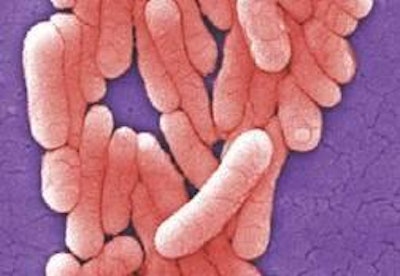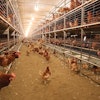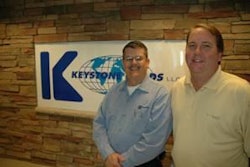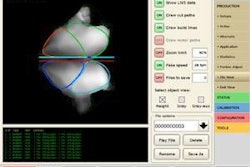
U.S. poultry processors are taking steps, including studying possible changes in antimicrobials and the methods of their application, to meet more stringent performance standards for foodborne pathogens announced earlier this year by the U.S. Department of Agriculture’s Food Safety and Inspection Service.
In spite of stringent government regulations and industry measures, rates of campylobacteriosis and salmonellosis are above Healthy People 2010 targets (Table 3). Because targets for illness associated with Salmonella and Campylobacter have not been met, USDA has issued new performance standards for poultry which can be a source for both pathogens. In the new regulations, Salmonella levels will have to be below 7.5% and Campylobacter must be below 10.4% on processed carcasses (2011, USDA, FSIS Directive 31-11).
While the poultry industry has experience with Salmonella control with currently approved antimicrobials, these interventions may or may not be as effective against Campylobacter.
Validation studies to guide antimicrobial applications
Most validation studies and in-plant experience indicate that spray applications can give reductions in Salmonella and Campylobacter. However, spray applications are not as effective as dip, chiller or finishing chiller applications. In spray applications, the contact time and coverage needed to reduce pathogens on poultry are not achieved. When evaluating antimicrobials for effectiveness, it is important to review literature and conduct validations studies to determine the best site, application and antimicrobial to reduce Salmonella and Campylobacter. The antimicrobials used may be approved as a spray application, dip application, chiller application or combination of these applications.
Site application and validated effectiveness are extremely important to consider when choosing an antimicrobial application. For example, because the picker is widely recognized as a major source of contamination, antimicrobial treatments for scalding possibly may not be chosen. Instead, it may be more effective and less expensive to include an antimicrobial application for a finishing chiller, post-dip tank or drench at the final step of processing whole carcasses.
Choice of antimicrobials
Currently approved antimicrobials for poultry include acidified sodium chlorite, bromine, chlorine dioxide, cetyl pyridium chloride, organic acids, peracetic acid, trisodium phosphate, monochloramine, electrolyzed water and hypochlorous acid (chlorine). Of these, paracetic acid application in a finishing chiller at 400 ppm or a drench application of cetyl pyridium chloride (0.8%) are probably the most effective in reducing both Salmonella and Campylobacter in a final decontamination step with a limited dwell time.
Chlorine can be effective in chiller applications with pH control (~6.0) but is not as effective in reducing Salmonella and Campylobacter with applications having short contact times. Tables 1 and 2 compare the effectiveness of paracetic acid and chlorine in a commercial poultry chiller to reduce Salmonella and Campylobacter (longer contact time). It makes more sense to use a higher concentration of paracetic acid or other antimicrobial in a finishing chiller, dip tank or drench, where the volume of water being treated is less than in a chiller (55,000 gallons or more, depending on the size).
When reviewing literature, it is important to look for those compounds that have given a 2 log or more reduction in a Salmonella and Campylobacter. Some published information suggests that there can be 1.5 logs, or so, of Campylobacter on processed carcasses and lower amounts of Salmonella. Therefore, targeting an antimicrobial concentration that will reduce pathogens by 2 logs would likely be very effective for finishing chiller or dip applications.
Adjustment for water quality
Lastly, when choosing an antimicrobial, it is important to know the water quality in the application. Hard water (high Ca or Mg carbonate) can reduce the effectiveness of some cleaning compounds and antimicrobials. Each company should evaluate its water quality and be prepared to discuss this factor with the chemical provider.
Overall, every company needs to validate its antimicrobial system to determine what is effective in its applications. Ideally, effective antimicrobial control identifies a few key points where effective antimicrobials can be used to control Salmonella and Campylobacter.

















